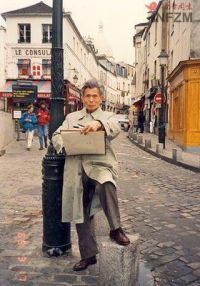Wu Guanzhong
Wu Guanzhong (吴冠中 August 29, 1919 – June 25, 2010), a contemporary Chinese painter, is considered as one of the most important figure in the country’s 20th –century art. With combination of eastern and western styles, Wu’s paintings have portrayed various aspects of China.
His recent death made a splash in public as the world’s renowned media, including, New York Times and South China Morning Post, wrote obituaries to memorize the unique painter. His generous donation of the paintings to museums in his late years became a good focus for media to develop their stories. According to Xinhua News Agency, he donated dozens of paintings to Hong Kong Museum of Art, which is now holding a solo exhibition for Wu to reveal his highly-skilled techniques in integrating the western art with the eastern. The New York Times also reported, in 2008, Wu gave 113 works to the Singapore Art Museum in a donation valued at US$53 million. He had an impact on the way the Western art world viewed Chinese painting. In 1992, he was the first living Chinese artist to have a solo exhibition at the British Museum.
Wu was born in Yixing, Jiangsu Province and was later educated at Zhejiang Industrial School in 1935. A year later, he was transferred to National Arts Academy of Hangzhou to start his artistic training. In 1947 he traveled to Paris to study at the Ecole Nationale Supérieure des Beaux Arts on a government scholarship. He had long been engaged in introducing western paintings to China ever since his return to the motherland. The schools he used to teach are namely the Central Academy of Art, Tsinghua University, Beijing Fine Arts Normal College and Centural Institute of Arts and Crafts. He was also made an Officier de l'Ordre des Arts et des Lettres by the French Ministry of Culture.
